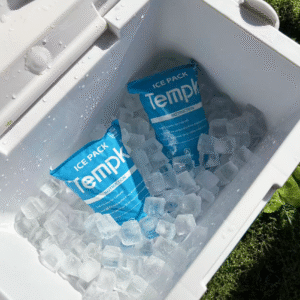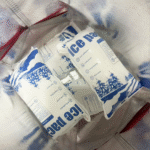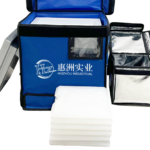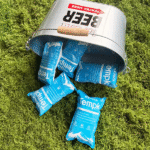Amazon Dry Ice Pack Sheet: How to Ship Right in 2025
If you need reliable 24–72‑hour control, an Amazon dry ice pack sheet can deliver when sized, placed, and validated correctly. In the next minutes, you’ll get a field‑tested packing plan, a quick sizing rule, and 2025 updates that raise performance and compliance—without messy CO₂ dry ice. All guidance is written for e‑commerce, meal kits, and health shipments.
-
Pick the right Amazon dry ice pack sheet for your route (coverage vs. hold time).
-
Build a high‑retention packout (layering, air‑void control, lid/base strategy).
-
Validate for 24–72 hours using a simple “two‑shipment” performance test.
-
Meet marketplace and carrier guardrails without hazmat complexity.
What is an Amazon dry ice pack sheet and why does it matter?
Short answer: An Amazon dry ice pack sheet is a hydratable, cut‑to‑fit ice blanket—not CO₂ dry ice. It hydrates, freezes at household‑freezer temps (~0 to −18 °C), and stays dry as it warms. You get flexible coverage, flat storage, and standard‑goods handling. That means fewer surprises at listing, inbound, or hand‑offs.
What this means for you: You can hit chilled (0–8 °C) and light frozen holds without Class‑9 labeling or vented crates. For deep‑frozen, you’ll still combine with CO₂ or higher‑mass coolants. This sheet shines where coverage and convenience matter: lids, bases, and wall strips around sensitive corners.
amazon dry ice pack sheet
How does a 24‑cell sheet compare for 24–72‑hour holds?
In practice, a 24‑cell Amazon dry ice pack sheet balances flexible coverage and cold mass. Start with lid + base; add wall strips when lanes get hot or transit extends past 24 h. Expect ~24–48 h chilled control with good insulation; push to 72 h using added sheets or hybrid coolants.
amazon dry ice pack sheet
| Packout Layer Plan | What to place | Typical thickness | Why it matters to you |
|---|---|---|---|
| Lid zone | 1 sheet (full or ½) | ~3–6 mm frozen | Fast pull‑down each open; reduces lid‑corner spikes |
| Product zone | Bagged goods + dunnage | — | Fills voids; prevents convection “chimneys” |
| Base zone | 1 sheet (full) | ~3–6 mm frozen | Keeps bottom corners cold for longer |
| Wall strips | 1–2 narrow strips | ~3–6 mm frozen | Stabilizes edge warm‑spots after 24 h |
| Insulation | Foam/VIP + liner | 25–50 mm | Slows heat ingress; extends every sheet’s runtime |
Practical tips you can use today
-
Hydrate evenly; then wipe and freeze flat. Even hydration = even freeze = fewer hot spots.
-
Place one Amazon dry ice pack sheet on the lid and one on the base. Cold falls; lid cooling improves recovery after door‑opens.
-
Kill air gaps. Use light dunnage to block vertical “flues” that warm corners early.
-
Add wall strips for warm lanes or >24 h targets. Simple, cheap run‑time boost.
amazon dry ice pack sheet
Field case: A bakery replaced two gel bricks with one Amazon dry ice pack sheet on the base + one on the lid, plus a small gel brick for mass. Summer complaints fell by a third because edges and the lid stayed colder through last mile.
amazon dry ice pack sheet
How many Amazon dry ice pack sheets do you need for 24–72 hours?
Rule of thumb: Cover first, then add mass. Use 2 sheets (lid + base) for most small boxes. Add +1 sheet per extra 24 h or for hot lanes (≥31 °C). Keep a 15–25% reserve for delays.
amazon dry ice pack sheet
Quick planner (copy‑ready)
| Container (internal) | Baseline plan | Warm lane add‑ons | Hot lane add‑ons | Outcome you can expect |
|---|---|---|---|---|
| <10 L lunch/mailers | 1×½ sheet top + 1×½ base | +1 narrow wall strip | +1 extra ½ sheet | 12–24 h chilled control |
| 10–20 L shipper | 1 full top + 1 full base | +1 wall strip | +1 full sheet reserve | 24–48 h chilled / light frozen |
| 20–35 L shipper | 2 full (top/base) | +2 wall strips | +1–2 full sheets | 36–60 h with good insulation |
| 35–60 L crate | 2–3 full | +2–3 strips | +2 full sheets | 48–72 h with hybrids |
Notes: Duration assumes decent insulation and pre‑chilled payloads. Extend runtime with vacuum panels or a small gel/PCM brick.
amazon dry ice pack sheet
How to pack with an Amazon dry ice pack sheet for best results?
Core play: Pre‑condition, place lid + base, fill voids, then verify. Keep steps simple so teams repeat them flawlessly.
-
Hydrate & freeze: Soak cloth side, wipe, freeze flat until rigid.
-
Pre‑chill the box: Stage empty insulated boxes in a cooler for 30–60 min.
-
Base layer: Place one Amazon dry ice pack sheet on the bottom.
-
Load goods: Bag, add dunnage, and avoid touching bare liners.
-
Lid layer: Place the second sheet under the lid.
-
Seal & label: Add a moisture barrier bag if labels wrinkle.
-
Validate: Run two small shipments; log temperature and arrival state.
amazon dry ice pack sheet
“One‑minute” decision tool
-
A. Shipping chilled (0–8 °C) snacks or kits? → Use sheets (lid/base), add wall strips in summer.
-
B. Shipping deep‑frozen ice cream? → Add CO₂ dry ice or heavier PCM; sheets become coverage buffers.
-
C. Listing sheets on a marketplace? → Treat as non‑hazmat coolants; keep SDS ready; follow liquids/gels prep if any variant ships wet.
amazon dry ice pack sheet
Compliance and safety: sheets vs. CO₂ dry ice
Sheets: Standard goods; no CO₂; simple to list, store, and ship.
CO₂ dry ice (UN 1845): Requires Class‑9 marking for air, net‑weight declaration, and compatible carriers. Some marketplace‑provided carrier services prohibit dry‑ice parcels; choose alternatives and follow label rules. Use Amazon dry ice pack sheet coverage to protect edges even when CO₂ is your main refrigerant.
amazon dry ice pack sheet
2025 developments that lift sheet performance
Trend snapshot (2025): Lighter gels, smarter indicators, and modular cell layouts are improving hold times and traceability with fewer sheets. Expect eco‑forward materials and embedded temp dots or Bluetooth loggers for quick audits. Hybrid packouts (sheets + VIP liners + a small PCM/gel brick) are now a go‑to for 48–72 h without CO₂.
amazon dry ice pack sheet
Latest advances at a glance
-
Hybrid PCMs: Extend sub‑zero plateaus without hazmat workflows.
-
Snap‑apart cells: Faster, tidier custom sizing on busy benches.
-
Smart hydration kits: Pre‑measured water pouches for consistent fill.
-
Brandable films & QR: Easy SOP access and disposal guidance on‑pack.
amazon dry ice pack sheet
Market insight: As home‑delivery and diagnostic kits expand, demand for mid‑duration passive cooling is rising. Teams win by standardizing lid/base coverage, validating two shipments per lane, then scaling with a documented BOM.
amazon dry ice pack sheet
FAQs
Q1: Are Amazon dry ice pack sheets “real” dry ice?
No. They are hydratable polymer sheets that freeze around 0 to −18 °C and stay dry as they warm. They do not sublimate like CO₂ dry ice.
amazon dry ice pack sheet
Q2: How long will one sheet last in transit?
With good insulation, plan for ~24–36 h chilled per full sheet; add sheets for warm lanes or longer routes. Validate with small pilots.
amazon dry ice pack sheet
Q3: For a 48–72 h target, what’s the starting setup?
Lid + base (2 sheets) plus wall strips, then add 1–2 sheets or a small gel/PCM brick. Hybrid beats over‑stacking one format.
amazon dry ice pack sheet
Q4: Can I cut sheets to size?
Yes. Hydrate and freeze first; then cut along seams. This reduces bead loss and keeps edges tidy.
amazon dry ice pack sheet
Q5: Do I need special labels or vents?
For sheets—no. If you add CO₂ dry ice, follow dangerous‑goods labeling, select a compatible carrier, and declare net weight.
amazon dry ice pack sheet
Summary and next steps
Three things to remember: (1) Start with lid + base Amazon dry ice pack sheet coverage, (2) kill air gaps and add wall strips for warm routes, (3) validate two shipments before scaling. Do that, and you’ll hit 24–72 h targets with fewer surprises and cleaner unboxings.
amazon dry ice pack sheet
Action plan:
-
Pick a sheet standard (24‑cell) and define lid/base coverage by box size.
-
Pilot two shipments per lane with a simple logger and reserve margin.
-
Document your BOM and SOP, then train teams. Need help? → Book a packout review with Tempk experts.
About Tempk
We engineer passive cold‑chain solutions—ice sheets, PCM packs, and insulated shippers—validated across e‑commerce and health logistics. Our team standardizes coverage‑first packouts, then hardens them with small pilots so you waste less time and cold mass.
CTA: Talk to a Tempk specialist to map your next‑lane packout.
























